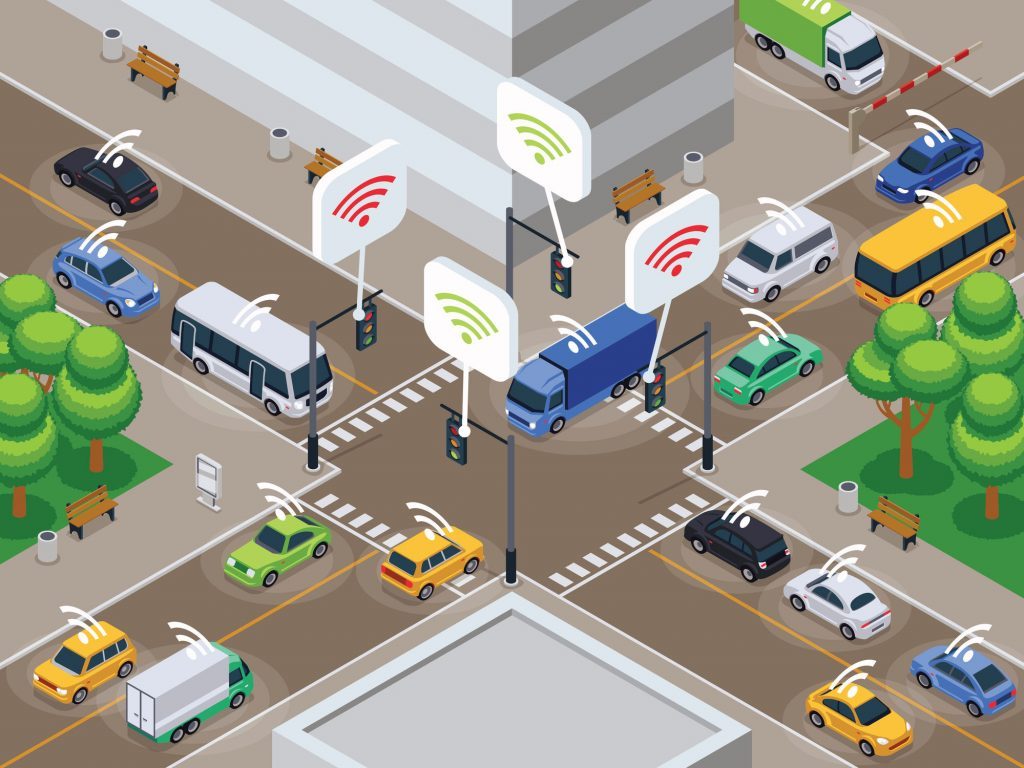 iStock
iStock Mobile technology isn’t just in your pocket 24/7. It’s everywhere around us today, with its continual byproduct — data — trailing us everywhere we go. The great nexus of this 21st-century trend isn’t really your smartphone — it’s the city where you live, work, and play. Over half of the world’s population lives in urban areas, which are expected to grow to accommodate an additional 2.5 billion people [1] over the next three decades.
What are some of the blue-sky possibilities with new mobile infrastructure in place?
While critics argue that 24/7 devotion to our devices can drive us apart, others point to how myriad streams of emerging data culled from every moving (and connected) thing pulsating through our cities — cars, buses, bicycles and more — can ultimately reshape and optimize our urban areas to make them better places to live.
That presents urban leaders today with enormous challenges, but also big opportunities to tap into the mobile-technology boom to improve everything from city services to air quality — and offer new insights into public safety and long-term urban planning.
A handful of critical technologies — specifically, the ability to move massive amounts of real-time mobile data between the dynamic urban world and the cloud — are key building blocks of that future. Veniam’s unique mobile-data platform [2], built for a future based on autonomous vehicles (AVs) and an emerging “Internet of Moving Things,” brings three essential enablers to this vision of truly smart cities:
- Multi-Network Mesh Networking: Vehicle to everything (V2X) capabilities using dedicated short-range communications (DSRC), 4G/LTE, and Wi-Fi with multi-hop, mobility, and bandwidth aggregation for improved connectivity experience;
- Local Data Management: the platform provides real-time, delay-tolerant data management for optimized cost, prioritization, and context-aware data transmission;
- Low Latency: Fast connection to cloud and edge services for critical real-time and event-driven applications.
What are some of the blue-sky possibilities with new mobile infrastructure in place? Here’s a look at some of the most promising:
Safer Streets
Experts speculate that early iterations of autonomous cars will hit the road by 2020 [3]. The impact on safety is one of the great promises of autonomous technology: A recent study by the Eno Center for Transportation predicts that when we reach the point where 90 percent of cars in the U.S. are autonomous, the number of accidents will fall from 6 million a year to about 1.3 million [4]. The enabler of this long-term vision: data. Fully-realized AVs will rely on a variety of cameras, sensors, and radar to operate safely and will generate roughly 4 terabytes of data in a typical day [5] of driving. Storage plays a critical role in the cars of the future to manage data systems such as AV mapping and navigation, infotainment, telematics, accident/drive recorders, digital clusters, vehicle-to-vehicle (V2V)/vehicle-to-infractructure (V2I), advanced driver-assisted systems (ADAS), and more.
Reduced Traffic
The rise of autonomous vehicles is also expected to lead to a dramatically lighter load on city streets. Ridesharing is already an innovative and competitive multi-billion-dollar industry, but experts predict that the rise of ridesharing with AVs and will mark another step away from automobile ownership in dense metropolitan areas, and less cars on the road. The AVs that do brave the commute, meanwhile, will all be gathering real-time data about traffic and congestion and cutting down on human habits that lead to stop-and-go traffic jams. A recent study [6] from the University of Illinois at Urbana-Champaign, for example, showed that the presence of just one autonomous car reduces the standard deviation in speed of all the cars in a traffic jam by nearly 50 percent, and dramatically cuts down on the number of sharp hits to the brakes.
More Open Space
Allocating space for parking is an essential but expensive part of doing business in big cities. Roughly 31 percent of the space in the central business districts of 41 major cities is currently dedicated to parking, and a study by the Sightline Institute [7] estimated that developers’ costs for parking increase average rent prices by over $225/month nationwide in the U.S. But data-driven autonomous vehicles will shift those numbers dramatically. A professor of transportation engineering at the University of Texas-Austin recently theorized that if you shifted an entire city to autonomous cars, it would need 90 percent less parking space [8] than it needs today, and global consulting firm McKinsey and Company has speculated that more AVs could open up 61 billion square feet of urban space [9] we’re currently using for parking spaces. Now imagine all that room opened up for developments like libraries, museums, or even green space.
Cleaner Air
Studies have already shown that autonomous vehicles and fewer cars on the road will cut down on CO2 emissions, but there are other ways cities can take advantage of mobile data to clear up the air. Some cities have already begun to implement mobile sensors attached to devices or objects that move throughout a city, and the information gleaned has been stunning. The Environmental Defense Fund has used data from vehicles to create methane maps and identify more than 5500 leaks in U.S. cities, while a leading Internet mapping company has equipped its mapping and imaging vehicles with an environmental intelligence platform with sensors monitoring particulate matter, NO2, CO2, black carbon, and more.
We already know the benefits of a society increasingly logged on and driven by data.
It shapes how we work, who we meet, and how we build our communities. But as our dependence on mobile data increases, how we push our cities forward into the future and make them better places to live will hinge on how we harness the information available all around us.
Author Information

Rui Costa is the CTO of Veniam, www.veniam.com. Email: rcosta@veniam.com.
To access full article including references, click HERE.






 JOIN SSIT
JOIN SSIT